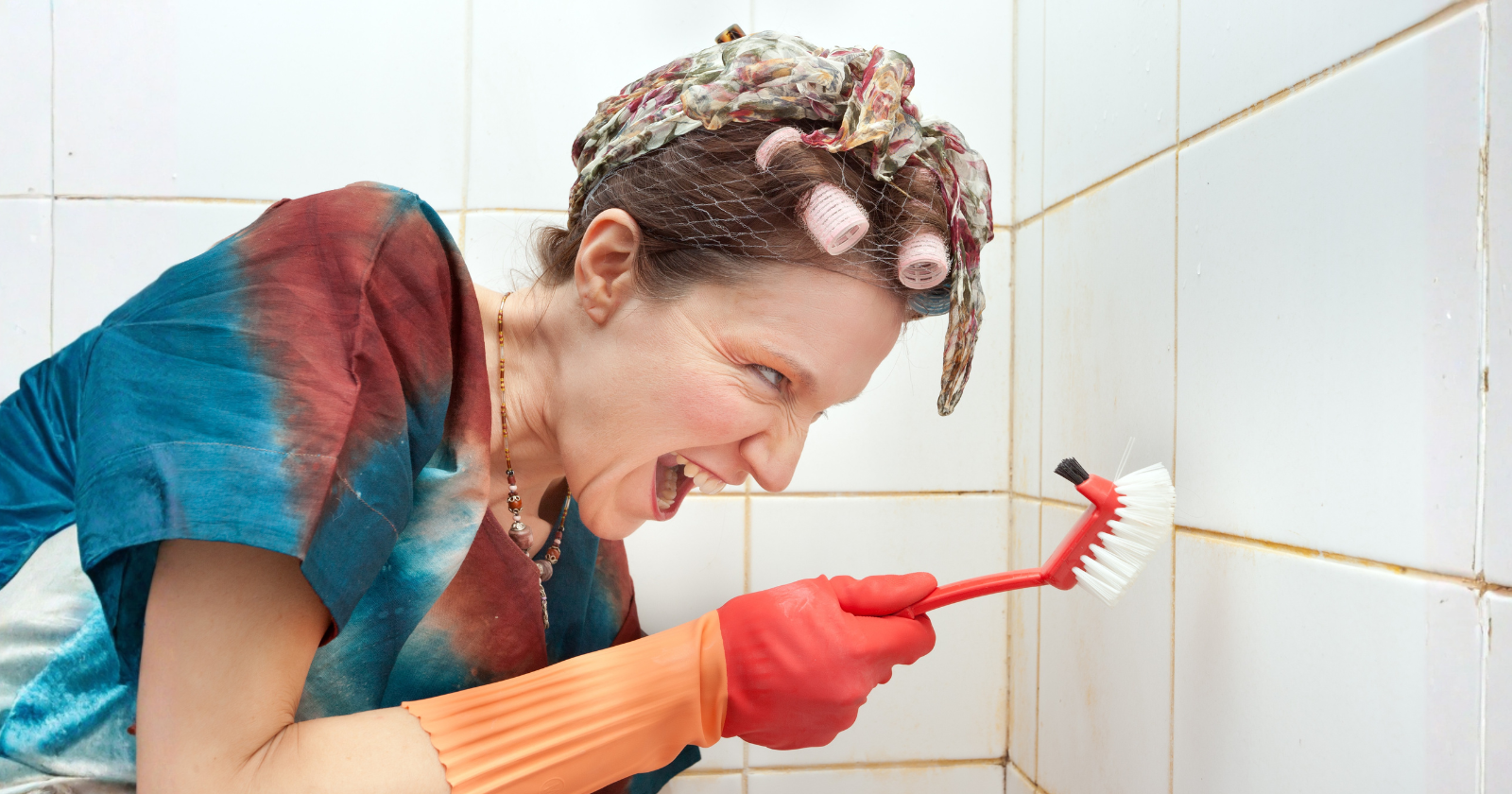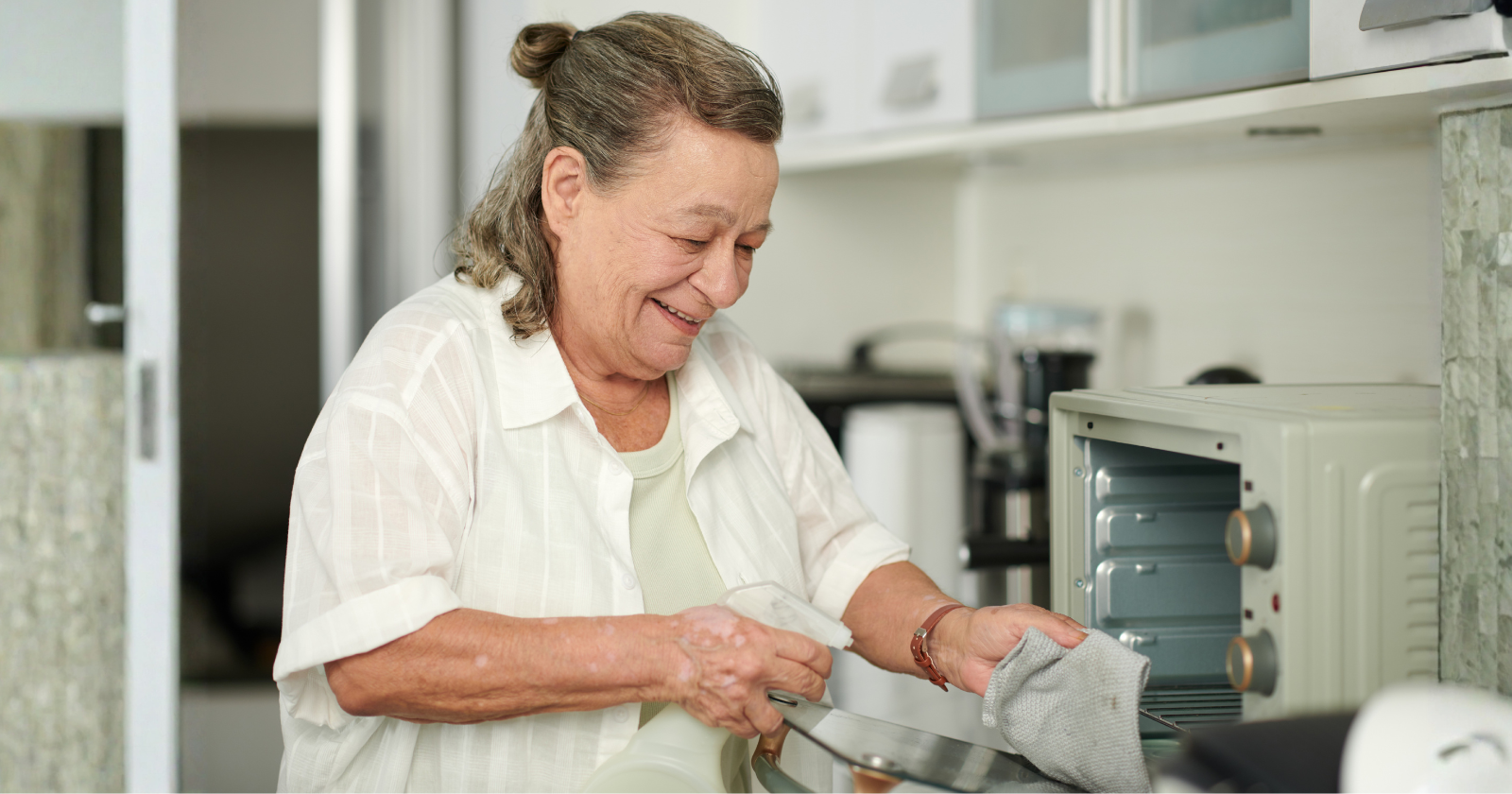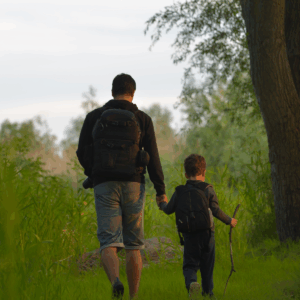If you’ve been running a home for years, you’ve probably got a rhythm that feels second nature.
You can wipe down a counter with your eyes closed, sort the laundry by sound, and smell when the dishwasher is lying to you about being “clean.”
Veteran mothers (and the rest of us who try to keep up) have a toolkit full of habits that seem non-negotiable.
However, some of those habits don’t actually work or, at least, they don’t work as well as we hope.
I say this with affection. I’ve watched my daughter and her friends do heroic cleaning marathons before a playdate, only to have a battalion of toddlers redecorate the living room with crackers ten minutes later.
With respect for the wisdom that keeps families running, here are seven cleaning habits many experienced moms swear by—even when they’re not pulling their weight anymore—and what to do instead:
1) The pre-dawn reset that gets undone by 8 a.m.
Do you ever set your alarm early just to “get ahead” of the mess?
You clear every surface, fluff the cushions, and finally sip your coffee like a champion… until sleepy feet hit the floor and the house blooms back to life.
Cereal boxes reappear.
Legos migrate.
The dog decides today is the day to shed an entirely new coat.
That pre-dawn reset can feel comforting—like you’ve planted a flag on the day.
But if it’s followed by frustration (because the order doesn’t last), you’re spending energy without a lasting return.
What works better? Create anchored mini-resets instead of one mega reset.
Tie quick tidies to events that already happen: after breakfast, before leaving for school, right before story time.
Keep them truly mini—five minutes, one zone, one basket.
I keep a basket by the living room doorway; anything that isn’t “living room” goes in, and we empty it at the next anchor.
- People who stay physically youthful as they get older, even without exercising much, usually adopt these 10 daily habits - Global English Editing
- If your adult kids blame you for every problem they have, these 8 truths will set you free - Global English Editing
- Psychology says people who stay mentally strong in their 70s and beyond share these 8 small routines - Global English Editing
No heroics, just rhythm and, yes, kids can do this.
Even preschoolers can “feed the basket.”
It’s not about the spotless room at 6 a.m.; it’s about a system that survives past 8.
2) Doing it all yourself because it’s “faster if I do it”
This one is close to my heart.
I used to reload the dishwasher after my kids “helped” because the bowls were facing the wrong way.
It felt noble at the time—protecting them from failure, protecting the dishes from spots—but the message underneath was: “I don’t trust you to learn.”
Veteran mothers are often efficiency experts.
You’ve learned how to fold at the speed of light and wipe a table with three elegant swipes.
But if you’re forever the only one who knows how to do it “right,” you’ll always be the only one doing it.
Try the slow-down to speed-up approach.
Teach one task at a time, and accept the learning curve.
Start with the result, not the method: “Dishes should be rinsed and face the spray so they get clean.” Let them find their way.
Praise what works; adjust one thing at a time.
We use a family “win list” on the fridge—five chores that earn a checkmark: load dishwasher, clear table, wipe sink, shoe round-up, toy rescue.
A full row of checks equals a small reward on Friday.
It’s not perfect, but it’s progress—and progress beats perfection.
3) Folding laundry like a department store display
If you love a crisp stack of T-shirts, I’m not here to steal your joy.
But I’ve watched many a seasoned mom put on a folding masterclass, only to watch the children rifle the drawer once and turn it into fabric confetti.
Ten minutes of precision undone in ten seconds of outfit-hunting.
The goal with kids’ clothes isn’t “best fold” but friction-free access.
If they can’t maintain it, the fold is too fancy for the stage of life.
Swap pristine stacks for zone bins: tops in one, bottoms in another, pajamas in a third.
Roll loosely or even don’t fold at all—just toss by type.
Label the bins with words or pictures so little ones can help put things away.
For older kids, try the “good-enough fold” rule: once a week, spend ten minutes neatening the bins—no more.
The rest of the time, let them take responsibility for their chaos.
4) Angry cleaning as discipline

I’ve seen this play out (and I’ve done it).
The house gets turned upside down, and the adults hit their limit.
Suddenly cleaning becomes a punishment: “Everyone stop what you’re doing—this place is a disaster!” Cue stomping, slamming drawers, and muttered commentary about no one ever helping.
Does the floor get visible? Sometimes.
Do kids learn to associate cleaning with tension and shame? Often.
Angry cleaning may produce short-term compliance, but it quietly teaches avoidance.
Who wants to return to a task that feels like a scolding?
Reframe with calm sprints and clear roles.
Put on a song.
Set a timer for five minutes.
Name each person’s job before you start: “You do stuffed animals to the net, you do books to shelves, I’ll handle dishes.”
When the song ends, so does the sprint.
If the room isn’t perfect, fine—you do another sprint after dinner or tomorrow.
Anger is an understandable signal (“I’m overwhelmed”), but it’s not a strategy.
5) “I’ll just soak it” piles that become science experiments
I have a soft spot for the soaking method.
Toss those crusty pans in hot water! Let that stained shirt marinate! It feels active.
You did something, but soaking, left unattended, becomes deferred maintenance.
I recently discovered a dull, sorrowful spoon at the bottom of a “temporary soak” I’d forgotten behind the blender.
The water was an alarming color I won’t describe.
If soaking is your habit, pair it with a visible trigger and a timer.
Pans soak in the sink only while the kitchen light is on.
When you switch the light off, you scrub or you drain—no in-between.
For laundry pre-treating, set a phone timer for 20–30 minutes.
When it rings, that load goes straight into the machine.
No “I’ll swap it later.”
If you’re soaking because you’re tired (understandable), simplify: A no-soak scrubber and a decent dish soap can get 90% of jobs done with a minute of elbow grease.
Future-you will bless past-you for not creating a swamp you have to face tomorrow.
6) Buying more organizers instead of owning less
Online carts full of clear bins and spinning trays are the adult version of a toy store wish list.
Drawer dividers promise serenity.
Over-the-door racks whisper, “You can keep everything if you just stack it vertically.”
Organizers are tools—not magicians.
If the stuff exceeds the space, no amount of acrylic will change the math.
Veteran moms know how quickly kid gear multiplies: art supplies, soccer shin guards, tiny plastic whatsits from party bags.
Add seasonal decor and well-meant gifts and suddenly you’re organizing the organizers.
Before you buy, do a last-mile declutter: one category at a time, pull, prune, and contain.
Three questions help: Do we use it? Does it fit our life this year? Could someone else use it more?
If you say “maybe” more than twice, it’s probably a no.
Then shop your house for containers—shoeboxes, mixing bowls, the basket in the entry that collects everything but mail.
Try the system for a week.
If it holds, then decide if a prettier bin is worth it.
Adopt a simple guardrail: One-in, one-out for categories that tend to explode (water bottles, plushies, craft kits).
Storage shouldn’t be a tax on your peace.
7) The perpetual surface wipe that never tackles the source
There’s a comforting ritual in the daily wipe-down—counters, table, bathroom sink.
It looks clean, it smells clean, and for ten minutes you can breathe.
But some families get stuck in what I call the shiny loop: polishing the same surfaces while the source problems keep pumping out mess.
Example: You wipe the entry bench twice a day, but shoes and backpacks sprawl because there’s no hook at kid height and no tray for muddy gear.
You sanitize the bathroom sink constantly, but there’s no hand towel near the faucet, so drips trail across the vanity like a snail track.
You mop crumbs every night, but the snack station lives over the carpeted play area.
Shiny loops feel productive.
They’re also Sisyphean.
Once a week, step back and do a source pass: instead of cleaning, adjust one upstream input.
Move the snack zone to a wipeable surface.
Add hooks the smallest kid can reach.
Put a towel ring where the wet hands actually drip.
Boot trays at doors where mud enters, not by the garage where you wish it would.
Pair this with a micro deep-clean: pick one nagging area (microwave, baseboards, under the couch) and spend 10–15 minutes.
Not a whole Saturday—just one micro.
Over a month, you’ve tackled four root issues and kept the dailies going.
That’s how homes feel calmer without you working longer.
Closing thought
Last weekend, I took two of my grandkids to the park.
We came home with shoes full of sand and a backpack full of acorns (treasure, I’m told).
Old me would’ve gone straight into grumble-mode about grit on the floor.
Instead, we did a 3-minute entry sprint: shoes in the tray, acorns to a jar, hand-wash and towel back on the hook.
Then we made hot chocolate. The floor still saw its share of crumbs later, but the stress didn’t own the afternoon.
That’s the real point, isn’t it? A clean home is lovely, but a peaceful one is better.
The best habits make room for real life, not the other way around.
If one of your tried-and-true routines isn’t giving the return it used to, you haven’t failed—you’ve just outgrown it.
Which one will you gently retire this week, and what small experiment will you try instead?



